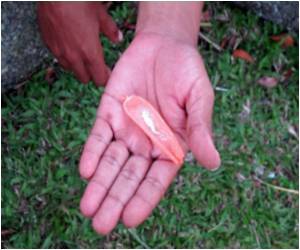
Meanwhile, detox clinics with few beds are being overwhelmed by demand for services, as some optimistically viewed the Canadian ban on OxyContin as an opportunity to kick their addiction and asked for help.
"The big unknown is whether the supply has dried up on the street, how many people are turning to other substances and what is going to happen in the next few weeks," said Rita Shahin, Toronto's associate medical officer of health.
Pharmacy robberies are already up, so far to 38 in the capital Ottawa this year. That is nearly as many as the 40 drug store robberies in all of 2011.
Ottawa police staff sergeant Mike Haarbosch said the dwindling supply of OxyContin and continued high demand is part of the reason for the increase in robberies.
"We noticed a spike in robberies in November when the switchover from OxyContin to OxyNeo started to be publicized," he said.
Advertisement
Although no longer prescribed, some pharmacies still have small quantities of OxyContin left over in their stores.
Advertisement
A 22-year-old man was the last to be charged this week in connection with a rash of robberies, including two pharmacies in Ottawa.
"Overdoses are another big concern with people moving to other substances, especially Fentanyl because it's much stronger than OxyContin and it's very hard to determine the dose that you're injecting because it's scraped off a patch," Shahin told AFP.
She pointed also to unknown health effects of injecting OxyNeo, a gel pill with identical chemical properties as OxyContin, into veins.
Two percent of adults in Ontario province, the Canadian epicenter of prescription drug abuse, or more than 25,000 people have reported using opiates for non-medical reasons in the past year, which is indicative of addiction, said Shahin.
When the OxyContin ban took effect on March 1, authorities braced for a withdrawal epidemic in many remote aboriginal communities, where as many as 80 percent of adults are hooked on prescription painkillers and few treatment options are available.
In Cat Lake in northwest Ontario, school children wrote in an open letter to their parents to shine a spotlight on the problem: "It hurts us and shoomis and kokum (grandpa and grandma) when you're doing drugs and you're not at home."
The drug is intended for relief of intense pain, by prescription only. But it had become widely available on bootleg markets throughout North America, particularly in Canada's native communities.
When crushed, snorted or injected, it creates an instant high.
Kicking the addiction can be too punishing for many. Withdrawal symptoms include irregular sleeping, shakes, diarrhea, headaches and anxiety, and relapses are frequent.
So far a crisis has not emerged.
But recovering addict Tony Sabourin in Ottawa told public broadcaster CBC that the transition to the new drug has already claimed three people he knows who unsuccessfully tried to cook OxyNeo and inject it earlier this month.
Source-AFP













